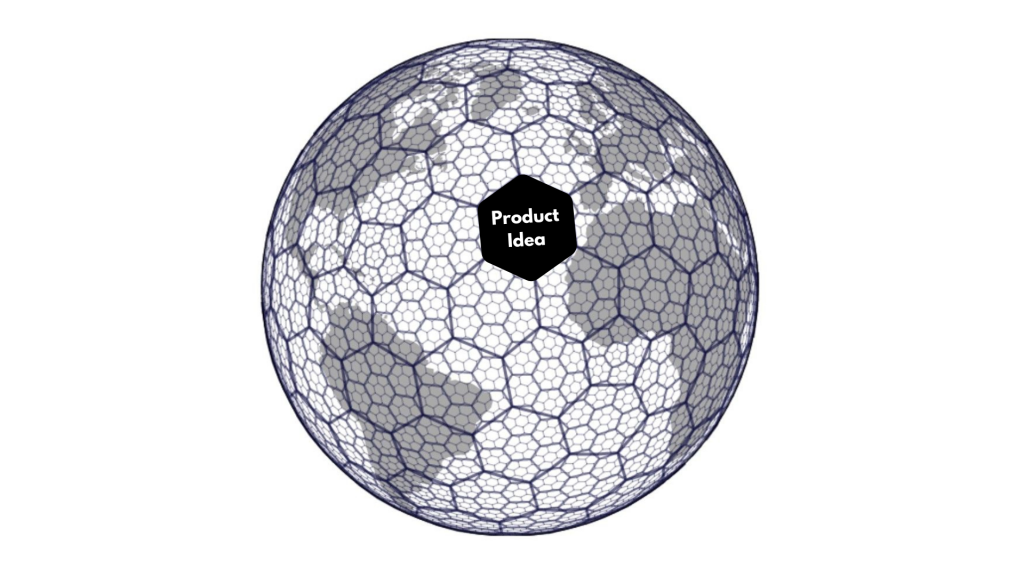When visualised, each locally viable product idea can be represented as a hexagon.
When these hexagons are mapped based on the spatiotemporal characteristics of the market for which they are a fit for, they successfully wrap up the globe with overlaps. Therefore, a swift way to mark out product ideas to work on is to concentrate on a hyper-locale and then, combine hexagons to form bigger hexagons.

Each single hexagon is hence, both a standalone product and a feature for a cluster of seven hexagons when grouping spherically.
Start from one hexagon irrespective of what the market size is. The sweet spot would be to build seven boundary-sharing hexagons instead of building overlapping hexagons while working at a hyper-locale level.
Building Micro-Products Instead Of Minimum Viable Products
Focusing on a hyper-local level to develop micro-products and then, aggregating those micro-products into larger products is a long process.
But, that also means you will not be developing minimum viable products and stay in wait to get a reaction from the market. Instead, you will be developing full-fledged micro-products and getting instant gratification whenever you see new customers using them.
Something that is needed for a company that needs to pick up momentum.
